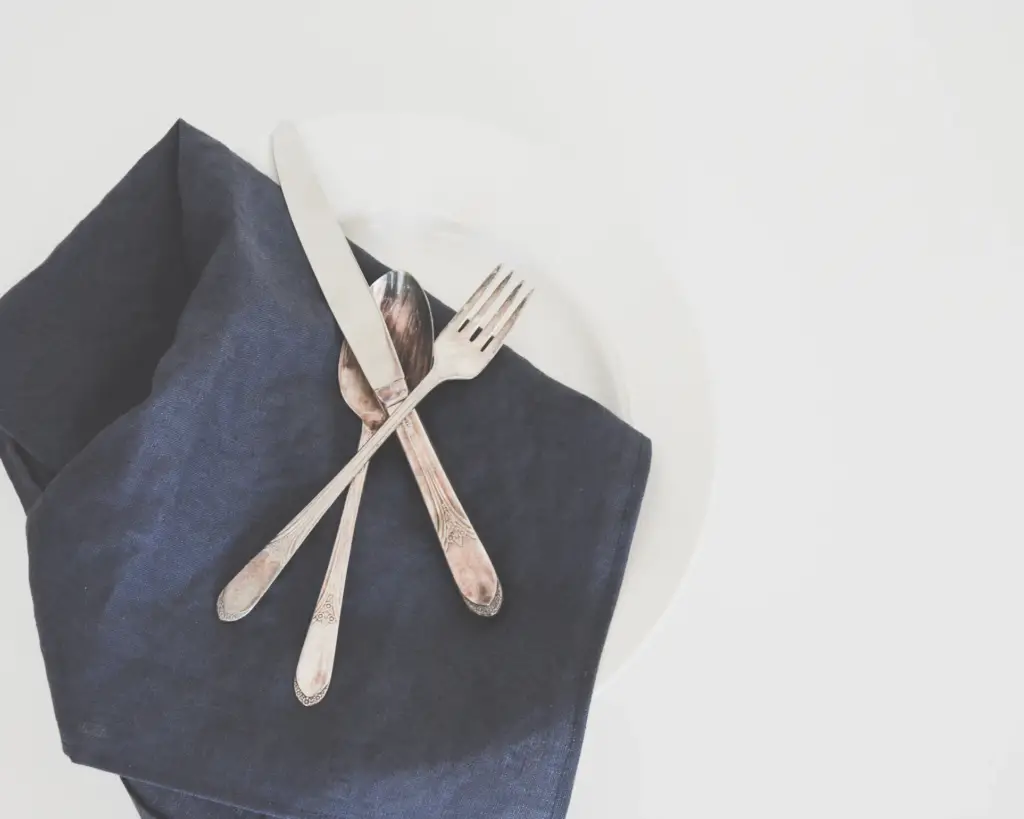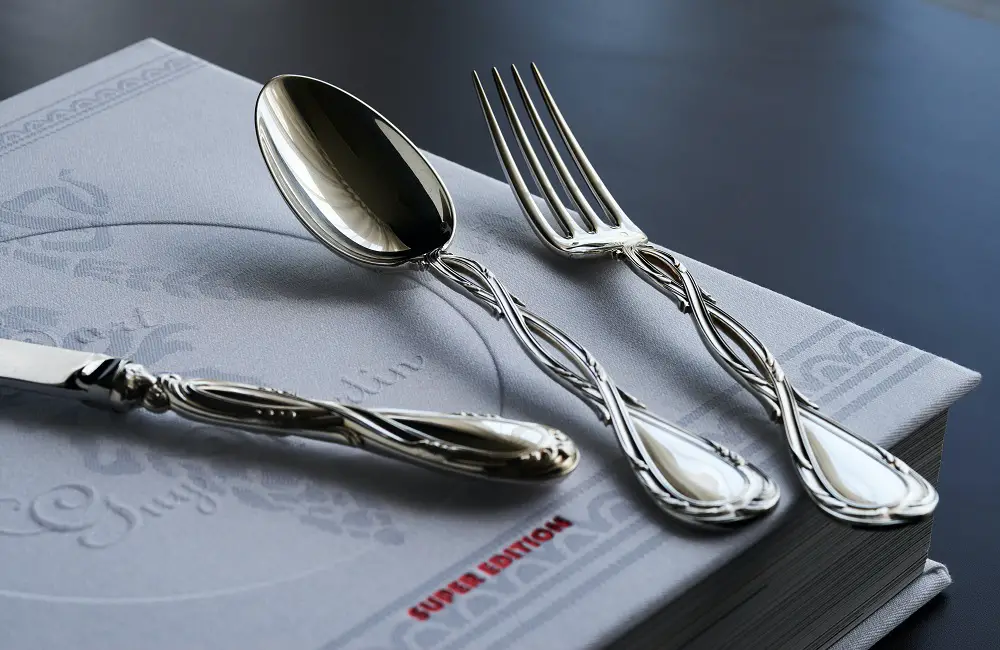Spoons and forks are the two most common utensils we use on a daily basis. At first glance, they may seem similar, but they have distinct differences in their shape, size, and usage. So, which one is better?
The answer is not that simple, as both utensils offer unique features that cater to our needs in different ways. In this blog post, we will compare and contrast the pros and cons of spoons and forks and hopefully settle on a definitive answer.
What Is A Spoon?
The typical spoon has three parts – handle, neck, and bowl. However, did you know that there are many various types of spoons made from different materials, sizes, shapes, and even unique designs?
For instance, a wooden spoon is perfect for cooking, while silver spoons are commonly used for special occasions. Some of the unique spoons that exist are soup spoons, tea spoons, dessert spoons, cocktail spoons, and salt spoons; each made for a specific purpose.
While the primary purpose of a spoon is to eat and serve food, it has more uses than what meets the eye. Ages ago, people used the spoon to measure ingredients. Today, measuring spoons are used to measure a specific volume of dry or liquid ingredient, and these come in various sizes.
Moreover, spoons can also be used for stirring, spreading, and even digging. These tiny tools come in handy when cooking and baking, and they are an essential part of every kitchen.
In addition to its practical use, a spoon is also a symbol of love and care. Whether it’s feeding a baby or an elderly person, the act of using a spoon to feed someone shows compassion and concern. The image of the spoon and the globe has become an icon for global feeding and hunger relief. This initiative aims to provide food for those in need throughout the world.
Did you know that a spoon’s shape can affect how we experience food? A recent study showed that the shape and angle of the spoon, the weight, and even the color of a spoon can influence the way food tastes. Additionally, the size of the spoon bowl can affect how much food people eat.

What Is A Fork?
In its simplest definition, a fork is a utensil with two or more prongs used for eating or serving food. The earliest fork-like objects can be traced back to ancient civilizations such as the Romans, Greeks, and Egyptians, who used a small three-tined instrument to cook meat.
However, it was not until the Middle Ages when the fork gained popularity as a tableware in Italy, and gradually spread across Europe over the next few centuries.
Initially, the fork was viewed as a strange and unnecessary item, with some even calling it an effeminate tool. It was often used only by the wealthy or as part of religious ceremonies. However, as culinary habits evolved, so did the functionality of the fork.
The most significant contribution to this evolution was during the 18th century, when the fork underwent various design changes. The tines became longer and narrower, making it easier to penetrate food, and the handle was lengthened and curved to provide a more comfortable grip.
Today, there are various types of forks available, each designed to serve a specific purpose and style of cooking. Some examples include the dessert fork, salad fork, seafood fork, dinner fork, and carving fork.
You could even find more unconventional forks, such as the spork, which integrates a spoon and fork into one utensil and the twirling pasta fork, which is specifically designed to twist and easily pick up strands of pasta.
Apart from design changes and new variations, the fork also plays a significant role in the cultures of different regions worldwide. For instance, in some Asian countries such as India, forks are not typically used, and locals prefer to use their hands while eating.
In the Middle East, forks with longer handles are used to aid in the sharing of food with others, and in some African traditions, forks made of carved wood are used for special occasions and honored guests.
Spoon Vs. Fork
Now that you know what spoon and fork is, let’s check out their differences.
Design Differences
The design of the spoon and fork is quite different. Spoons are shallow and usually have a rounded bowl at the end. The bowl can be either oval, round, or even heart-shaped. The handle is usually thinner than the bowl and can be short or long depending on the type of spoon.
On the other hand, forks have a long, thin handle with two or more prongs at the end. The prongs are usually sharp and can be straight or curved. The design of the fork itself gives it an advantage in picking up and holding certain foods, such as spaghetti or salads that require stabbing.
Food Types
The type of food you are eating may also determine which utensil you should use. Spoons are ideal for liquid or semi-liquid foods such as soup, chili, or cereal. They can also be used for lighter dishes like fruit salad or ice cream.
Forks are great for solid foods, such as vegetables, meat, and rice. They are perfect for picking up bite-sized pieces of food that require stabbing or scooping. Additionally, forks can be used for cutting through soft or tender foods.
Eating Techniques
When it comes to eating, there are different techniques for using a spoon and fork. One advantage of using a spoon is that they can easily be filled with food. You can dip it into a dish or scoop food onto it.
You can also use the edge of a spoon to cut through softer foods like cake or flaky pastries. Forks are commonly used for impaling food and bringing it to your mouth. Additionally, forks can be used to steady food like when cutting meat, especially steak.
Dining Etiquette
The etiquette around eating with utensils can vary from culture to culture. In the Western world, there are certain rules to follow. For instance, when scooping food with a spoon, you should always bring it to your mouth rather than leaning into the bowl.
While eating with a fork, the fork should be held in the left hand, and the knife in the right hand. After cutting a piece of meat, you should place the knife down and switch the fork to the right hand to eat. Knowing proper dining etiquette can come in handy in social situations.
Personal Preference
Finally, this debate over spoons vs. forks can be settled by personal preference. Some people prefer to use spoons for everything while others swear by forks. While each utensil has its advantages and disadvantages, ultimately, your comfort level and convenience will dictate which utensil you use more often.

Why Do People Use Forks Instead Of Spoons?
Firstly, forks have been in use for a much longer time than spoons. The fork was invented in ancient Greece and was used for cooking and serving food. On the other hand, spoons were created to eat softer foods like soup and porridge. Forks were seen as a more versatile utensil as they could be used for various types of food. Thus, forks have always been more popular than spoons and are still widely used today.
Secondly, forks are a preferred utensil for eating many meals. They can be used to eat a variety of foods, including pasta, pizza, salad, and vegetables. Forks can also be used to cut food like meats and fruit. They have prongs that allow you to hold and pierce food, making it easy to eat. Unlike spoons, which may not be as effective in cutting or gripping food, forks are the ideal utensil for many meals.
Thirdly, forks are part of etiquette and proper dining manners. When dining with others, it is important to have proper dining manners. Using a fork is one of them. Using a fork not only shows proper etiquette but also makes dining easier. It’s more professional, and it shows respect to those that are around you. This is one of the reasons that forks are commonly used to eat at social events.
Fourthly, forks are used more because they are easier to use. Forks are designed to be lighter than spoons, making it easier to hold and maneuver around your plate. This is especially important when eating food with sauces or gravies. Forks are also easier for people with mobility issues to use. They can be held in one hand and used to push food onto a spoon or lift it to the mouth. All of this makes forks more convenient and user-friendly than spoons.
Conclusion
So, in conclusion, spoons and forks are both important utensils that provide various benefits and drawbacks. It’s impossible to determine which one is better than the other, as they cater to different needs and purposes. However, understanding their differences and knowing when to use each tool can make mealtime more enjoyable and efficient. Whether you prefer spoons or forks, it’s always nice to have both handy in your cutlery drawer.

